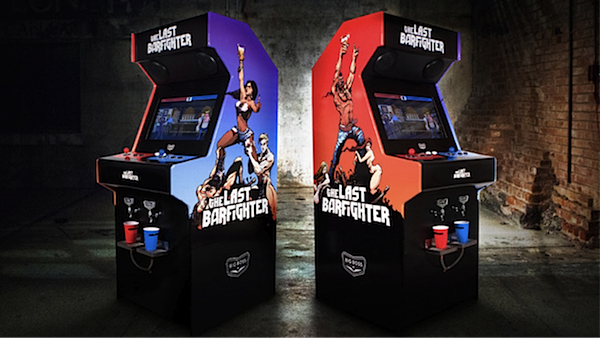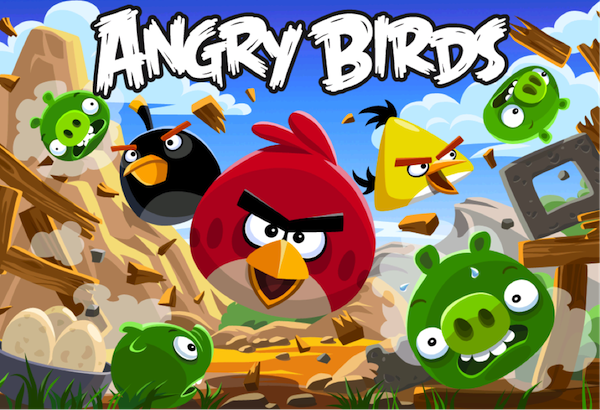As an industry, we have the tendency to think and talk about user experience design in either a Web or a software context, where the demand to humanize complex interactive systems has been the highest.
But if we define a user as a person who uses a thing or a system, then the Web and software contexts represent just one space in which people have a “user experience.”
Other equally important contexts abound, including products and services, advertising and marketing, gaming, and events and environments.
In all contexts and throughout history, empathy, creativity, and systems thinking have played important roles in designing user experiences. But until the creation of complex software systems, the role and deeper practices of a UX designer weren’t necessary.
It’s a new and rapidly growing field, and many members of our practitioner community have jumped over from related areas such as psychology, anthropology, marketing, graphic design, industrial design, programming, and computer science to lend a hand.
With new technologies prominent in so many new contexts, UX designers are becoming more integral to the creation of systems and things outside of our Web and software spaces. As we grow and branch out, our empathy, creativity, and systems thinking will ultimately tie our community and practices together.
Products and Services
Despite the increased adoption of digital technology, we still live in a very analog world. Stores are filled with aisles of physical stuff we still buy and use every day.
The services and systems behind the things—whether it’s pizza delivery, a FedEx shipment, or a visit to the auto mechanic—are equally prevalent and essential. The success of their designs is integral to how and when we use them.
The Alessi Lemon Juicer in our kitchen cupboard is a physical thing, but it’s also a catalyst of certain behaviors that result from the design of the product, whether intentional or not. Empathy, creativity, and systems thinking are required to look deeply into the process behind juicing lemons and then creating solutions that effectively address the human needs and desires.
Someone designing a lemon juicer will consider what it looks like alone and how it fits with the rest of a user’s kitchen; how easy its parts are to manipulate, store, and wash; how the juice will reach the container beneath the juicing mechanism; and how the juicer may reflect a user’s identity. All of these factors affect the way someone will use a juicer. Philippe Starck, the designer of the Alessi Lemon Juicer is rumored to have said, “It’s not meant to squeeze lemons, it’s meant to start conversations.”
Advertising and Marketing
If you build it, they will not come … not without a marketing strategy. Many designers complain about advertising and marketing, but awareness precedes usage. It’s challenging to find and use something one is not aware of. Yes, there’s bad advertising, but there’s also bad design, bad software, bad websites, bad apps, and so on. Good advertising (with the help of good design) connects people with something meaningful.
Because brands now have a presence in people’s lives beyond their initial product and service, advertising has grown exponentially more interactive and integrated over the past decade: think ChipIt! by Sherwin-Williams, Whopper Sacrifice for Burger King, or the uber-popular Nike+ FuelBand.
Specialized content, utilities, entertainment, and more create an ongoing experience to maintain a meaningful connection with people. Advertising is becoming less about messaging and campaigns and more about behavior and platforms. A UX designer is essential for great advertising when a campaign is implementing empathy, creativity, and systems thinking to create useful, usable interactions within a brand’s ecosystem.
Recently, McKinney, the creative agency I work for, designed and built the first-ever arcade game that dispenses beer to the winning player. The beercade features “The Last Barfighter” game and has cupholders in place of typical coin slots. Everything from the game itself to the cabinet (which houses a chilled keg) and side-panel illustrations were created in-house. Its core purpose is to advertise for Big Boss Brewing, but it also happens to be a product, a game, and an event.
Our designers had a close cultural connection to gaming arcades of the 1990s and uncovered a growing desire to recreate that experience in today’s social context of bars and beer enjoyment. They considered what kind of game people would be most interested in playing at Big Boss Brewing and in bars across the country. They asked: How can we reinvent the social arcade experience for today’s players? How can this concept and execution tie back to the brand in a meaningful way? What behavioral implications do we need to account for while mixing electronics, competition, beer consumption, and the law? The resulting increase in Big Boss Brewing sales and social media traffic proves that the designers’ answers to these questions made a difference.
Gaming
Gaming and gamification have been hot topics in the corporate world recently. Though game design and video gaming are their own industry, the trend of “gamification” has injected many of the fun, engaging principles of games into products and experiences that have traditionally been more mundane. Games and user experiences are structured very similarly: Both exist within a specific context and have a beginning, middle, and end.
A set of rules or “interaction mechanics” guides the user to a goal at the end. If the game/UX is too challenging, participants will grow anxious and leave. Conversely, if the game/UX is not stimulating enough, participants will grow bored and leave. Whether it’s Chutes and Ladders, Call of Duty, LARPing, Magic: The Gathering, FarmVille, or Tetris, games respect this basic framework.
Let’s look at arguably the most successful mobile game to date, Angry Birds. Great empathy and creativity were required to construct the eccentric story of the bird characters and make them easily relatable and intriguing to the players. Even more so, rich systems thinking helped lay the framework behind how all of the characters, rules, physics, levels, flow, controls, and conditions would work together in a simple, effective manner. One of the most notable things about this game is the amazing craft that went into every detail. A major contribution to the success of Angry Birds was the introduction of new mechanics, tools, and challenges at exactly the right time.
Events and Environments
Because we are never not using something—gravity, oxygen, our senses, the ground, lighting, heat—we are always engaging with the environment. The vast quantity of possible arrangements and interactions within a given space makes spatial design one of the richest forms of UX. When I describe designing an interface, I often use the metaphor of architecture, saying that UX designers create the “blueprints” for the end product; we don’t always build the end code or aesthetics, but we do build the frameworks that inform how people use them. UX’s focus on the structure, functionality, and flow of whatever it is we’re creating is similar to an architect designing the structure, functionality, and flow of a building or space. Event designers, too, consider how users will enter the space, what they need there, and what actions and affordances are necessary when, where and how, allowing for adequate customization and so on.
The Guggenheim Museum of New York by Frank Lloyd Wright is a great example of what happens when an architect considers the psychology of space. Like much of Wright’s work, this space emphasizes natural design over rigid geometry and can serve as a great inspiration for UX design.
Wright brought new creative thinking into his architecture and the experiences of those who interacted with his work. Due to the upward spiral layout, traffic congestion at intersecting points is a nonissue. The vast, continuous gallery allows people to enjoy the art without feeling overpowered by the space. If someone get’s separated from their party, no worries: The open space at the center allows people to look across and locate one another easily. It required much empathy and systems thinking on Wright’s part to develop such a grand, simple, and usable gallery experience in the heart of 1950s Manhattan.
Conclusion
Whatever the context and media involved—from beer-dispensing video games to lemon juicers to vast architectural spaces—design fueled by empathy, creativity, and systems thinking will unite the UX community and our practice, whatever our background and ambitions.
Technology will continue to disrupt and mutate our lives. Our job is not to resist the mutation, but embrace it and figure out how the differences can work together. Similarly, we should celebrate our diversity as much as our commonalities, especially while this industry is still forming its identity. Part of that formation must include learning about and embracing the diverse contexts in which we work. UX Design was at the heart of a Neanderthal putting a handle on the first hammer, and it will be there when we put a GPS on the first teleportation device.











